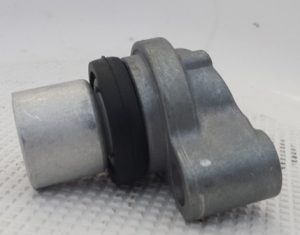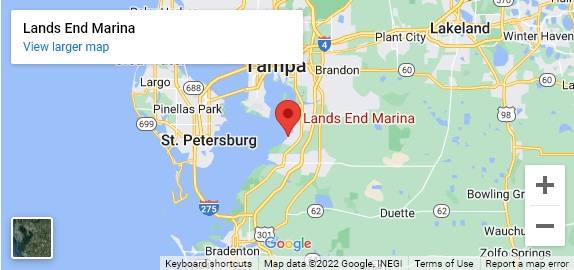Normal maintenance is the key to the longevity of an outboard motor. Outboards live in a very harsh environment and with many models costing north of ten thousand dollars, it is important to protect your investment.
Anodes Then and Now
 Today, four stroke motors make up a large segment of the outboard market. Most people are aware that an annual routine maintenance schedule includes replacing items like the engine oil, filter and spark plugs. There are also several lesser known items that should be replaced once a year or every hundred hours of run time. One of the often overlooked items on this list is the internal sacrificial anode.
Today, four stroke motors make up a large segment of the outboard market. Most people are aware that an annual routine maintenance schedule includes replacing items like the engine oil, filter and spark plugs. There are also several lesser known items that should be replaced once a year or every hundred hours of run time. One of the often overlooked items on this list is the internal sacrificial anode.
Internal anodes are not new; many motors have had smaller versions in place for a number of years. The difference is that in older engines they were not easily changed and in many cases major motor parts such as cylinder heads had to be removed to reach them. Flash forward to today’s motors and the anodes are not only much larger, but most of them can be easily accessed simply by removing one or two small bolts.
Preventing Corrosion
Today’s outboard motors consist of more moving parts, multiple types of metals, and many more electronic components. This combination can increase the possibility of corrosion and electrolysis, especially in a saltwater environment. To keep your motor cool, water is pumped throughout the powerhead from the water pump, eventually exiting through the exhaust and tell-tale fitting.
These passages weave their way through major components including the cylinder heads, the engine block itself, and the exhaust manifolds. If these components corrode away to the point where water can leave the cooling system and breach other systems, it can be at the very least an expensive repair. The worst-case scenario would be a motor that is virtually ruined by corrosion-related water damage. It doesn’t take much water to do damage when it comes to parts such as bearings or pistons. A little bit of corrosion goes a long way.
The two biggest things you can do to help avoid this costly damage is to flush your engine after every saltwater use and replace your internal anodes.
Choosing the Right Anode
Any time two different kinds of metal make contact and are submerged in water a low level electrical current is created. This current is the basis for electrolysis and corrosion.
Inside an outboard there are several types of metal ranging from aluminum to steel and brass. The way the anode works is by being more conductive and active than the other motor parts. This is why anodes are made of specific metals designed for your motor and the environment that it lives in. Boats that are operated only in freshwater will have anodes made of a different material than those that are only operated in saltwater. As a general rule, anodes that work okay in both fresh and saltwater are made of either aluminum or zinc. Magnesium anodes are only for freshwater use and will not protect your outboard as well in saltwater. Unless you have a lake boat that only lives behind the house, it’s usually better to avoid magnesium anodes.
Replace the Anodes, Save Your Boat
The lowly internal anode lives a quiet life in your cooling system and while it is not as glamorous as other parts, it spends its life trying to save your outboard. Depending on the make and model of the motor these anodes will differ in number and location, but they all have one thing in common: They are cheap protection against an expensive failure. Consult the manual for your specific motor to find the location of your anodes or just have them checked the next time you have the motor serviced.
When to Replace the Anodes
In order to perform a visual inspection the anodes must be removed from the block. The easiest way to judge whether or not an anode is in good working condition is by its appearance. Sometimes they are dissolved away to a nub or half-eaten, and it’s easy to see that they are candidates for replacement. Other times, it’s not quite so obvious. A good rule of thumb for judging the condition of both internal and external anodes is how shiny they are. When new, anodes are usually shiny and slick-looking. If the anode is dull and gray, the odds are pretty good that it is not working up to capacity and should be replaced. If it is covered in a layer of salt or slime, replace it.
Anodes are not costly, and while it may seem like overkill to replace an intact anode just because it has turned a dark gray, this is one case where it’s better to err on the side of caution. If the anode looks good (shiny and not covered up or pitted) it can be reinstalled, but in that case it’s a good idea to swap out the grommet or o-ring that seals them against the block. Failure to replace this two-dollar piece of rubber can allow water leaks in the cowling that will not only create additional corrosion on the outside of the block, but will also cause a loss of cooling water that can lead to overheating.
Boats are expensive and replacing a motor is not something that most people want to do. Whether you prefer to use a technician or perform routine maintenance on your own, do yourself a favor next time and don’t forget the anodes. These small parts will be sitting there quietly, minding their own business, hard at work protecting your motor from corrosion. Paying a little attention to them now can save you thousands in the long run.


